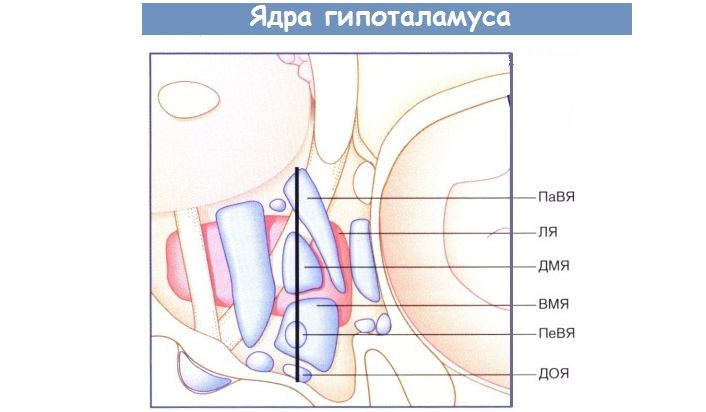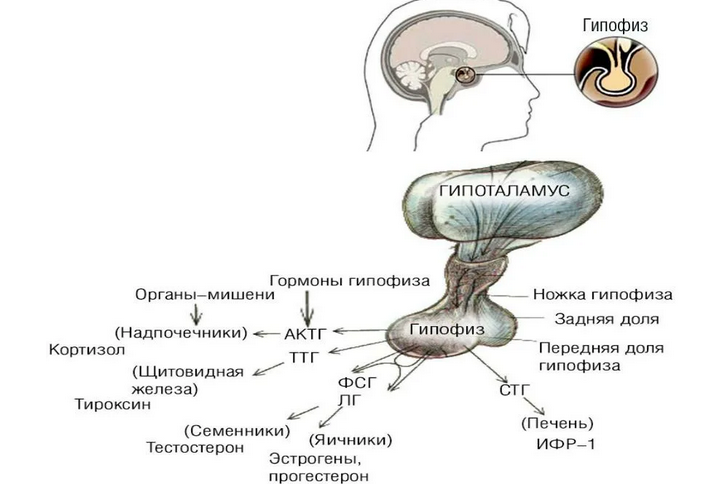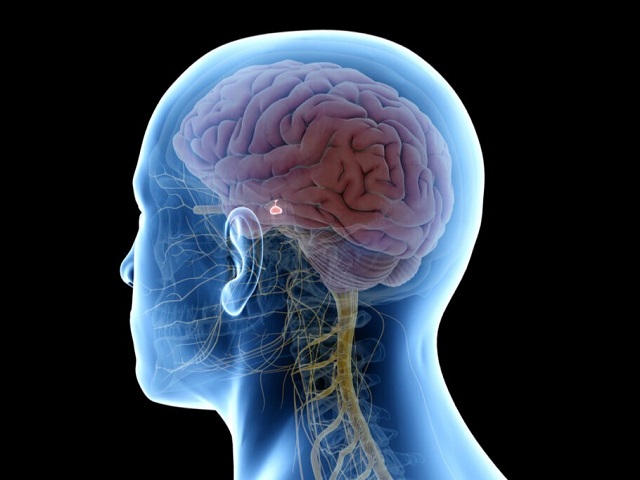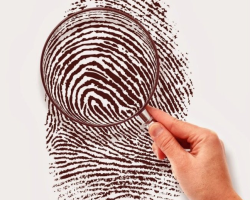This article describes the structure, functions, the connection of the hypothalamus and the pituitary gland.
Content
- Where are the hypothalamus and pituitary gland?
- Hypothalamus and pituitary gland system: structure, anatomy
- Hypothalamus and pituitary gland: functions, connection
- What processes does the hypothalamus are responsible for?
- The work of a hypothalamus and pituitary gland: hormones in men and women
- Pituitary gland and hypothalamus: diseases
- Video: Human glands: hypothalamus, pituitary gland, epiphyse
- Video: Talamus and Hypotalamus - Vyacheslav Dubynin
- Video: Hormones of the hypothalamus and pituitary gland
The hypothalamus is a structural part of a small brain that plays a major role. It monitors the work of homeostasis, that is, the balancing of all systems and organs, and takes part in different neuro-psychological processes. In the hypothalamus, the impulses of the nervous system turn into biochemical, so different psychos. Processes can modify the physiological functionality of the human body.
Read another article on our website about the hypothalamic-pituitary system-structure, functions, violations. You will also learn about the features of the regulation of the hypothalamic-pituitary system.
More information about what kind of organ it is, and what role the pituitary gland plays for the body is described in this article. Read further.
Where are the hypothalamus and pituitary gland?

Hypotalamus is an area of \u200b\u200bthe brain that is located under the crust. Belongs to the intermediate brain. Here's a description where is in more detail:
- Hypothalamus It is located near the basal region of the anterior brain and the lower share of the middle brain, lower than the thalamus. The size of this organ is equal to the parameters of the walnut.
- Pituitary Located on the lower surface of the brain in the bone pocket called the Turkish saddle.
It is impossible to describe the hypothalamus, and not talk about the pituitary gland. These glandular organs are associated with functions and structure with each other.
- The hypothalamus regulates the functionality of our body through the pituitary gland.
- They work together according to the type of communication. This is because the hypothalamus controls the concentration of the necessary hormonal substances in biological fluids in the body.
If these hormones are at the required level, the hypothalamus will not throw substances into the pituitary gland that stimulate their production. As a result, the pituitary gland will not produce biologically active substances, and their number decreases sharply.
If there are too few of these substances in the biological fluid, the hypothalamus releases its main lines into the pituitary gland, stimulating it to release its personal hormones.
Hypothalamus and pituitary gland system: structure, anatomy
The hypothalamus contains a gray vein, funnels, the pituitary nerve (rear lobe) and an optical transition. They are divided into the anterior, medial, rear and side regions, as well as into separate centers-offers.




Hypothalamus and pituitary gland: functions, connection
All departments of the hypothalamus have its most important functions. This body is also very related to the pituitary gland. Here is a description of the functions and communication of these organs:
Front region of the hypothalamus:
- The supraventricular base responsible for synchronization is biological. rhythms (sleep and active phase), regulates them.
- Supraoptic base - performs synthesizing and secreting vasopressin and oxytocin.
- The parahenitricular base - performs synthesizing and secreting vasopressin and corticoliberin.
- Genital base - regulates the secretory functions of gonadotropin.
The average (or nodal) area:
- The ventromedial nucleus is the dorsumedial part, the center of satiety.
- The arched nucleus is also called a funnel -shaped area, is engaged in the production of pituitary hormones that activate the cells of the anterior pituitary gland.
Lateral region:
- The reservoir region is a hypothalamus from the side. An irritation of this part causes a craving for food, and its violation leads to the development of anorexia.
Rear area:
- Medial and lateral base - have a close connection with the limbic system and hippocampus.
- The rear area of \u200b\u200bthe wise base - regulates t ° bodies.
Experimental experiments conducted on animals showed that the center of pleasure is located in the hypothalamus. Stimulation is performed through it in a nerve crust, so this organ is called the subcortical sensory area.
What processes does the hypothalamus are responsible for?
The hypothalamus is responsible for many processes in the human body:
- In this organ, the nervous and endocrine systems function together.
- It is here that the impulses of the nervous system turn into biochemical.
But not only these processes occur. The hypothalamus is the main control body of our body. It connects the work of 3 different systems:
- Performs its process of regulation through the vegetative nerve. system (through the barrel of the head. And spin. limbic and endocrine system (through the pituitary gland).
The hypothalamus also performs the following:
- Controls the secretion of vasopressin.
- Oxytocin is responsible for our emotion. The background, because it is part of the limbic system, which is responsible for the regulation of emotional. behavior.
- Supports intracorporeal homeostasis, that is, supports the optimum temperature.
- Performs energy.
- Manages water and electrolyte exchange.
In other words, the hypothalamus is the central region, where the psyche. Processes turn into the biochemical functions of our body. This is due to the 2nd catecholamines:
- Adrenaline
- Norepinefrin
In general, this is what depends on the hypothalamus:

The hypothalamus is also responsible for sex. function (cycles of reproductive system) and emotional. Reactions associated with it.
The work of a hypothalamus and pituitary gland: hormones in men and women

The hypothalamus produces a number of hormones, the most important of which are:
- Oxytocin - is responsible for the reproductive functionality of the body. It begins to spread as a result of irritation of the walls of the vagina and cervix. The reduction of the uterus begins, the transportation of sperm to the reproductive paths of a woman is accelerated and provokes childbirth. Promotes the production of milk secreted by a nursing woman.
- Vasopressin - Antidiuretic hormone (ADG), which enhances tubule reabsorption. Therefore, when it increases, the body produces less urine.
The hypothalamus also distinguishes hormones that control the pituitary gland. It:
- Liberins - They are engaged in the stimulation of the pituitary gland so that this body secrete the appropriate hormones.
- Somatocrinin Increases the secretory function of the growth hormone (somatotropin).
- Statins - Suppress the secretory function of many pituitary hormones, for example, somatostatin reduces the secretion of growth hormone (somatotropin).
The hypothalamus is also the central area of \u200b\u200bsex. excitement. It performs different functions in men and women.
- For representatives of the stronger sex, it is engaged in the regulation of hormones in such a way that they are at a constant level.
- For ladies, hypothalamus reacts to a high level of sex hormones, suppressing their secretion. When the level becomes low, it stimulates again.
Below you will find out what pathologies can have a hypothalamus and a pituitary gland. Read further.
Pituitary gland and hypothalamus: diseases
Due to the characteristics of the anatomy of the hypothalamus, as well as its close arrangement to other organs and systems, such as pituitary glands, vessels of the cranial base, the third ventricle of the brain, symptoms of dysfunction of this gland are different and often very complicated. However, they are associated with the functionality of this organ. The neoplasms of the hypothalamus of benign and malignant genesis - a gamartomic type and vascular malformations are distinguished.
Diseases playgrounds - An extensive group of diseases that can be due to the presence of a pituitary tumor or nearby structures, vascular pathology and inflammatory, including granulomatous diseases.


Video: Human glands: hypothalamus, pituitary gland, epiphyse
Video: Talamus and Hypotalamus - Vyacheslav Dubynin
Video: Hormones of the hypothalamus and pituitary gland
Read on the topic:
- Human brain trunk: structure, function, lesion and disease
- Anatomy - the extrapyramidal motor system of the brain
- Anatomy - the structure and functions of the skull of a person
- Brain development. 30 exercises for the brain of children, schoolchildren, adults and the elderly
- 10 factors affecting the acceleration of the aging process of the brain







